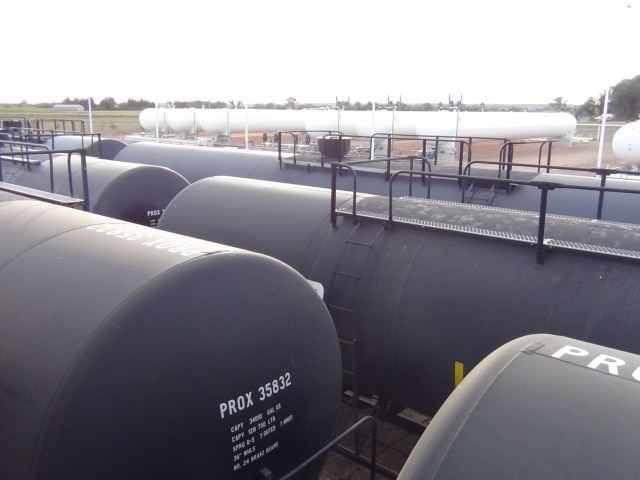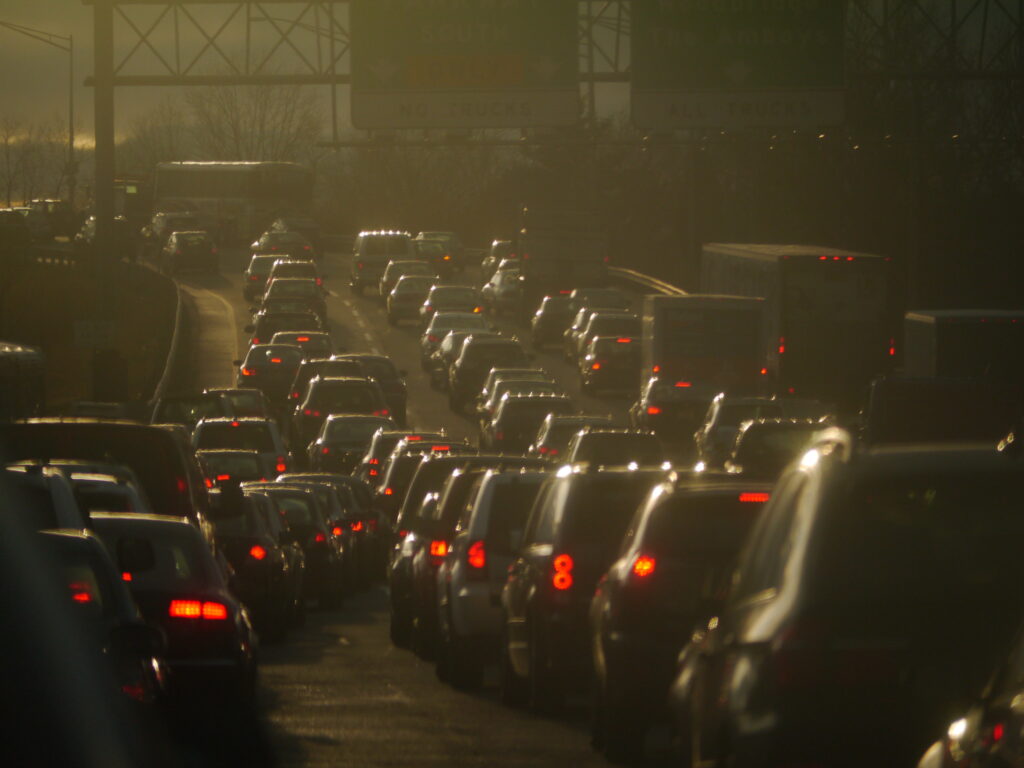Since the oil train explosion in Lac-Megantic in July of 2013, we have learned that there are some obvious safety issues that need to be addressed regarding transportation of crude oil by rail. The first is that the majority of the rail cars transporting this oil are DOT-111’s which have been deemed unsafe due to their tendency to rupture in accidents. The second is that Bakken crude oil can be explosive and isn’t being properly classified for transport.
Since Lac-Megantic we have heard many calls for increased rail safety. In August of 2013, Senator Chuck Schumer (D-NY) wrote a letter to the Federal Railway Adminstration (FRA) and the Pipeline and Hazardous Materials Safety Adminstration (PHMSA) requesting that the agency begin a phase out of the DOT-111 rail cars. Senator Schumer also referenced a March 2012 letter written by National Transportation Safety Board (NTSB) Chairman Deborah Hersman requesting safety upgrades to existing DOT-111 rail cars.
On January 15th, 2014, Representative Corrinne Brown (D-FL) wrote a letter to Jeff Denham (R-CA), who is Chairman of the Railroads, Pipelines and Hazardous Wastes Congressional Subcommittee, requesting a hearing be held regarding rail safety. In her letter she mentions that several members of the Subcommittee have already written letters requesting a hearing on rail safety as far back as August 2013. Brown wrote:
“Again, we urge the subcommittee to hold a hearing immediately on rail safety. We believe the hearing should, at a minimum, include representatives from the NTSB, FRA, PHMSA, the rail industry, and rail labor. Thank you in advance for consideration of this request.”
Additionally, there are concerned elected officials across the country who have requested action on rail safety. Even Rahm Emanuel, former White House Chief of Staff and current Mayor of Chicago has joined the chorus of people requesting improved rail safety.
Last week, the PHMSA released the first results regarding the testing of Bakken Crude. This testing began in November 2013 and is one of the few changes that have been made since the explosion in Lac-Megantic. The results were not good as over 50% of the samples taken were found to be improperly classified. The offenders paid fines ranging from $12,000 to $51,530.
“Beginning in August to Nov. 1, 2013, PHMSA inspectors tested samples from various points along the crude oil transportation chain: from cargo tanks that deliver crude oil to rail loading facilities, from storage tanks at the facilities, and from the pipeline connecting the storage tank to the railcar that would move the crude across the country,” said DOT. “Based on the test results, 11 of the 18 samples taken from cargo tanks delivering crude oil to the rail loading facilities were not assigned to the correct Packing Group.”
So there is ample evidence that the DOT-111 cars are unsafe and prone to spills in crashes and that Bakken Crude is being misclassified by oil companies to make it appear as less of a risk than it actually is to the public. And as trains continued to explode over the past six months, we have had repeated requests by lawmakers to do something about this.
So why has nothing happened? You probably already know that answer, but here are the details.
Department of Transportation Secretary Foxx reportedly met with oil and railroad executives in mid-January of 2014 “pressing them to come up with voluntary changes in the way oil is transported to increase safety.” Asking the oil and rail industries to self regulate is not a proven method for achieving safety.
As a result of the meeting with Foxx, one industry executive “volunteered” to do something. Of course it had nothing to do with addressing the “inadequate” DOT-111’s or the explosive nature of Bakken Crude.
Jack Koraleski, CEO of Union Pacific, the nation’s largest freight railroad, told The Associated Press the railroad industry already plans to begin treating crude oil like a toxic chemical and carefully plan out the safest routes possible using existing federal rules for the most hazardous chemicals. He said the decision was made as a result of the meeting with Foxx.
While this sounds like a good idea, the reality is that it doesn’t do much.
Government regulations require more than two dozen different factors be considered to determine the best route for dangerous shipments to follow. But that doesn’t always mean those shipments are routed around cities because the main route through a city might be considered the safest option since it might have better-maintained tracks and safer crossings, Koraleski said.
So much for the industry’s voluntary efforts. So who can actually make something happen when it comes to rail safety?
Well, there is the Pipeline and Hazardous Materials Safety Administration (PHMSA). They don’t seem to be in a hurry to make changes but they do want us to know that implementing rail safety changes would be a “very costly endeavor.”
In a May 2012 letter to NTSB Chairman Hersman, PHMSA Administrator Cynthia Quarterman stated the following regarding DOT-111 rail cars (emphasis added).
There are approximately 45,000 DOT-111 rail tank cars in ethanol and crude oil service versus approximately 130,000 DOT-111 rail tank cars in service for PG I and II hazardous material. Given the large number of rail tank cars that would be impacted by a rulemaking, and to facilitate more timely handling of the rulemaking, stakeholders have requested that PHMSA address rail tank cars in alcohol and crude oil service separately. Requiring all new and existing DOT-111 rail tank cars to comply with enhanced design standards will no doubt be a very costly endeavor. Please be assured that PHMSA will evaluate all relevant options in taking any rulemaking action. We invite and encourage NTSB to comment as we proceed through the regulatory process.
The PHMSA is currently saying they will have suggestions for new regulations in 2015. This has even drawn criticism from North Dakota Governor Jack Dalrymple.
“They say they can’t come up with specifics until 2015, and to me that just sounds like a bureaucratic answer,” said Dalrymple, a Republican elected in 2010.
According to the PHMSA website, prior to her position as Administrator, Quarterman worked as a partner in a law firm representing pipeline companies and railroads for ten years. Prior to that position, Ms. Quarterman worked for the now notorious Minerals Management Service where she worked directly with the oil and gas industry. So if the PHMSA isn’t going to do anything, who else is there?
Jeff Denham (R-CA). He is Chairman of the Railroads, Pipelines, and Hazardous Wastes Congressional Subcommittee which has jurisdiction over everything from railroad safety, to hazardous materials transportation, to the Pipeline and Hazardous Materials Safety Administration. He is the person who can convene the hearings on rail safety.
According to a January 15th article in FuelFix, Denham has promised a hearing on rail safety, as requested by Congresswoman Brown, and his aides confirmed they were in the process of planning the hearing. According to the committee website, as of today, it looks like a hearing has been scheduled for February 26th.
That’s a step in the right direction. But how strenuously will Rep Denham approach this task? It’s worth noting that Denham’s top contributors include Bechtel Group (rail and tar sand development), CSX (rail), and Berkshire Hathaway (rail).
So the current state of rail safety improvement can be summed up as follows. The NTSB does an excellent job of making recommendations but they have no ability to change anything. They send detailed letters to the PHMSA discussing these recommendations. The PHMSA, run by a former lawyer for oil and rail companies, eventually writes a letter back to the NTSB.
Despite four accidents in the last six months involving Bakken Crude and DOT-111’s that resulted in massive explosions and oil leaks, the Congressional subcommittee with the ability to do something about this is just now organizing its first hearing.
We’ll see what happens on the 26th. Will we see meaningful action? Or hear more platitudes from public servants arguing once again that safety is a “very costly endeavor.”
Image credit: U.S. Department of Transportation
Subscribe to our newsletter
Stay up to date with DeSmog news and alerts






